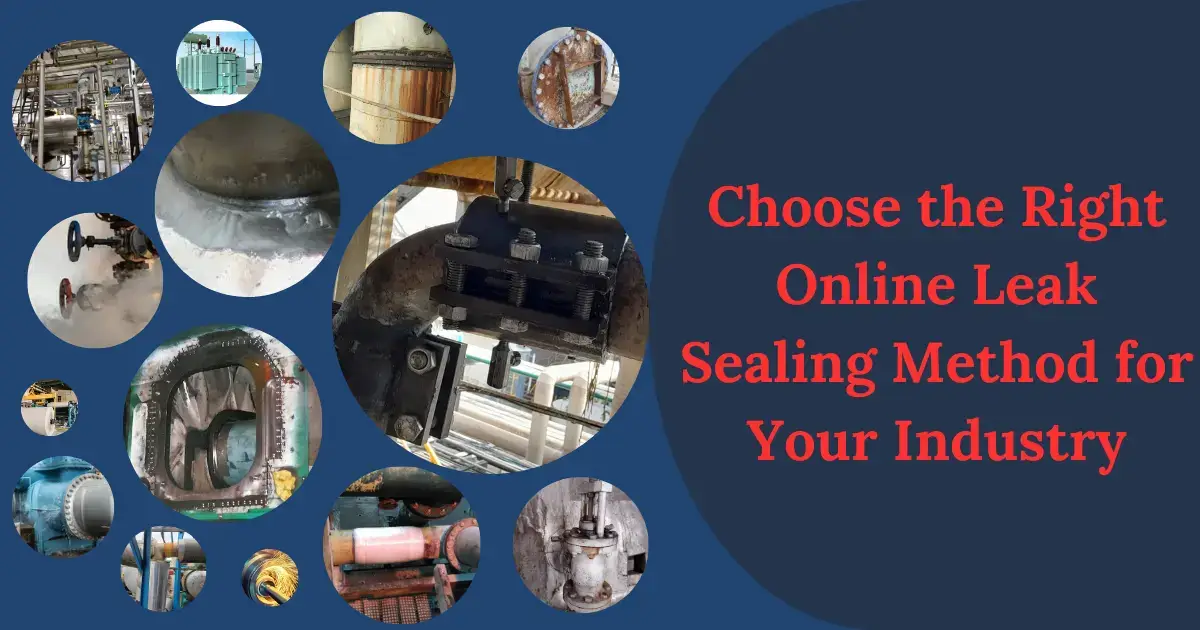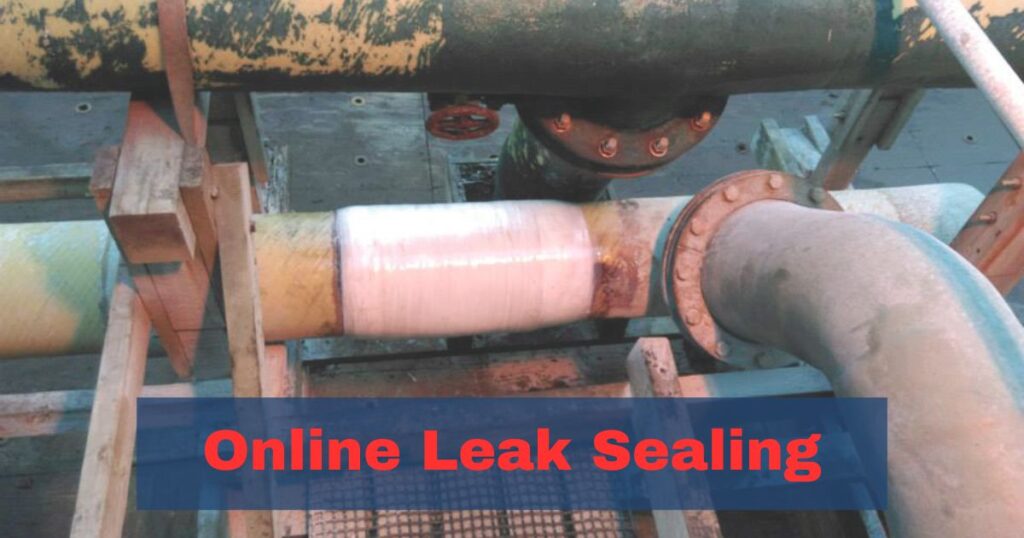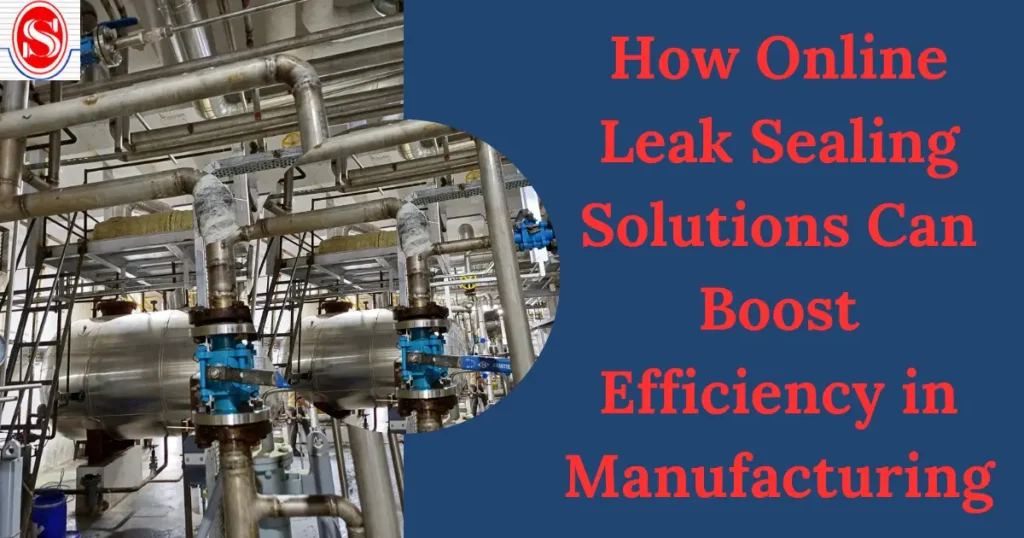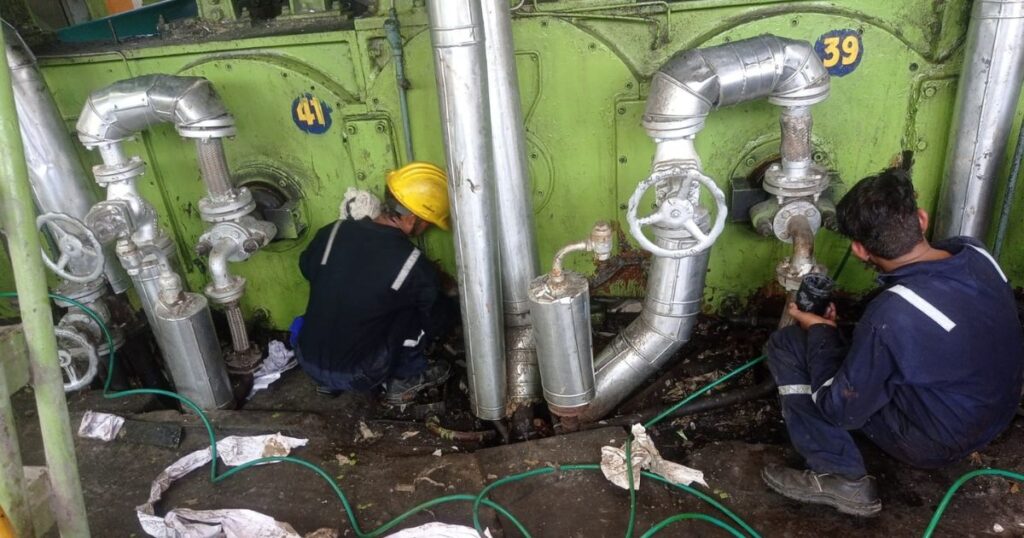
Common Leak Sealing Methods
Crack/joint injection is a specialized technique used to seal cracks or joints in structures where water or other fluids are leaking. This method is particularly effective for sealing minor to moderate leaks in concrete structures, pipelines, and other industrial settings.
Key Benefits:
- Precision in targeting leaks
- Quick and efficient application
- Suitable for a variety of structures
Curtain grouting involves injecting grout behind the surface of a structure to create a barrier against water intrusion. This method is often used when the leak source is not easily identifiable or when large areas need to be sealed, such as tunnels, dams, and underground structures.
Key Benefits:
- Comprehensive sealing for large areas
- Effective in complex structures
- Durable and long-lasting solution
Other Leak Sealing Techniques
Epoxy resin injection is commonly used for structural repairs but can also serve as an effective leak sealing method. Epoxy resins are synthetic polymers that bond strongly with various materials, including concrete, metal, and wood. This technique is ideal for leaks that occur in areas where additional structural support is needed.
Key Benefits:
- Strengthens the structure while sealing leaks
- Bonds with multiple materials
- Ideal for areas requiring extra reinforcement
Swellable waterstops are hydrophilic materials that expand upon contact with water, effectively sealing off leaks. These materials are often used in construction joints and segmented tunnels, providing a reliable and easy-to-install solution for water intrusion.
Key Benefits:
- Expands to fill gaps and seal leaks
- Simple installation process
- Suitable for segmented concrete structures
Key Considerations for Leak Sealing Method Selection
The size and location of the leak are crucial in determining the best sealing method. For small, accessible leaks, crack/joint injection might be sufficient. However, larger or hard-to-reach leaks may require more comprehensive solutions like curtain grouting.
Considerations:
- Is the leak easily accessible?
- How large is the leak?
- What is the extent of the damage?
Different sealing methods work better with certain materials. For instance, polyurethane grouts are typically used with concrete, while epoxy resins are better suited for metal surfaces. Ensuring that the sealing material is compatible with the structure is essential for the success of the repair.
Considerations:
- What material is the structure made of?
- Is the sealing method compatible with the material?
Different sealing methods work better with certain materials. For instance, polyurethane grouts are typically used with concrete, while epoxy resins are better suited for metal surfaces. Ensuring that the sealing material is compatible with the structure is essential for the success of the repair.
Considerations:
- Can the method handle the pressure and temperature?
- Will it effectively stop the leak in the long term?
Cost is always a factor in industrial maintenance. While some methods may have a higher upfront cost, they could be more cost-effective in the long run by reducing the need for frequent repairs.
Considerations:
- What is the initial cost?
- What are the long-term savings?
In some industries, regulatory compliance is non-negotiable. The chosen leak sealing method must meet industry standards and regulations to avoid legal issues.
Considerations:
- Does the method comply with industry regulations?
- Are there any legal requirements to consider?
A sustainable leak sealing method not only addresses the immediate issue but also contributes to the long-term durability of the structure. This minimizes the need for future interventions and helps maintain operational efficiency.
Considerations:
- Is the solution durable?
- Will it minimize future maintenance needs?
Selecting the right online leak sealing method for your industry requires a careful evaluation of various factors, including the type of fluid, pressure, temperature, and size of the leak. By considering the severity and location of the leak, material compatibility, effectiveness, cost-efficiency, regulatory compliance, and long-term sustainability, you can choose a method that ensures the safety, durability, and efficiency of your operations. A well-informed decision will lead to long-lasting results and reduce the likelihood of future leaks.



